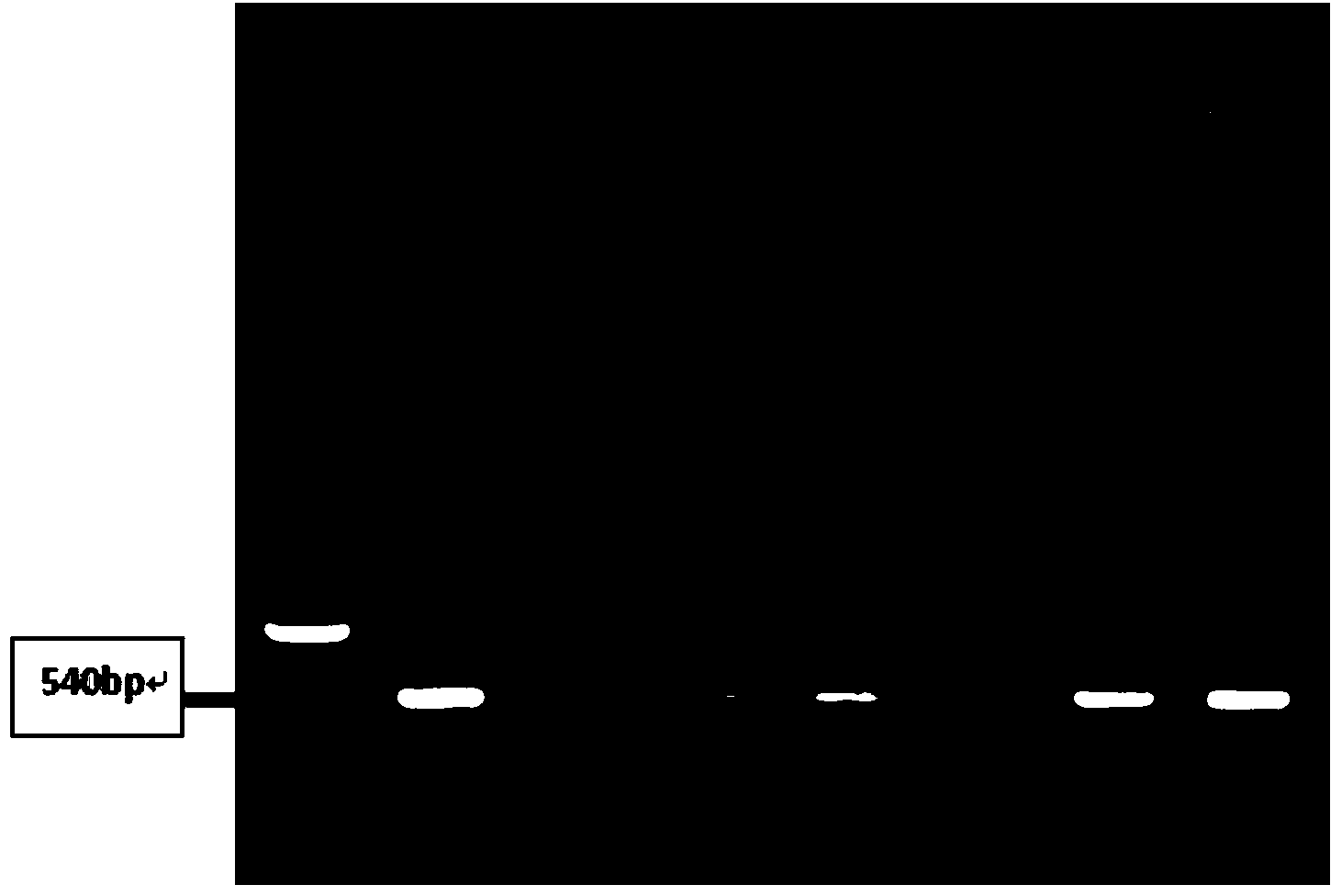Construction method for anti-insect transgene corn with stable heredity
A technology of transgenic corn and its construction method, which is applied in the field of corn biotechnology breeding, can solve problems such as unsuitable for long-term use, easy residue, environmental pollution, etc., and achieve the effect of excellent agronomic traits and good resistance
- Summary
- Abstract
- Description
- Claims
- Application Information
AI Technical Summary
Problems solved by technology
Method used
Image
Examples
Embodiment 1
[0030] A method for constructing stable hereditary insect-resistant transgenic corn, the steps of which are as follows:
[0031] (1) Preparation of embryogenic maize callus:
[0032] By artificially controlling pollination, the callus induction material Hi-II (A188*B73) material seeds were prepared, and the F 1 The generation seeds are planted in the field, strictly self-pollinated, and the pollination materials and dates are recorded on the signboard. Take back the young ears 10-14 days after pollination, sterilize the surface with 75% alcohol, pick immature embryos (1.2-1.8mm in diameter) and place them in N6 induction medium, culture them in the dark at 28°C to induce callus, and wait for type I callus After formation, transfer to subculture medium, culture in dark at 28°C, and subculture once every 20 days to induce embryogenic callus (loose, dry, brightly colored, fast-growing somatic embryos) as transformation recipients.
[0033] Specific steps are as follows:
[003...
Embodiment 2
[0085] Integration and expression verification of offspring of insect-resistant transgenic plants, the specific steps are as follows:
[0086] T 0The generation seeds were planted in the field of Huazhong Agricultural University in Wuhan, and T 1 generation single plant. At the jointing stage, fresh leaf DNA was extracted using the CTAB method, PCR primers (Cry1C*-F and Cry1C*-R) were designed using the target gene sequence for PCR detection, and individual plants carrying the target gene were selected for Southern hybridization detection, and those with fewer copies were selected Individual plants were tested by RT-PCR and ELISA.
[0087] (1) Transgenic plant seeds are planted in ear rows, using T 0 The same primers and PCR detection method were used to screen the T cells carrying the target gene. 1 Subsequent verification of individual plants.
[0088] (2) Southern hybridization detection of cry1C* gene integration:
[0089] 1) Using the CTAB method to extract fresh le...
Embodiment 3
[0116] Field resistance and phenotype analysis of new materials carrying cry1C*, the specific steps are as follows:
[0117] (1) Field resistance detection
[0118] In 2011, the T3 generation transgenic materials ZmKc-2-3, ZmKc-3-2, ZmKc-3-5 strains and ZmKc-2-3 backcrossed materials in the background of Zheng 58 were planted in the field, and the inbred line Zheng 58 was used as the control , without using pesticides during the whole growth period for field resistance identification, and to evaluate the damage of Asian corn borer under natural conditions. On the 15th day after the insect infestation appeared, the proportion of damaged leaves was counted. 43.71% of the leaves of the control Zheng 58 were severely damaged, with an average of 5.75 leaves damaged, while the damage to a single transgenic plant did not exceed 0.02. After growing to the stage of milk maturity, the proportion of dead tassels caused by the borer of the stem was counted. The proportion of the control ...
PUM
 Login to View More
Login to View More Abstract
Description
Claims
Application Information
 Login to View More
Login to View More - R&D
- Intellectual Property
- Life Sciences
- Materials
- Tech Scout
- Unparalleled Data Quality
- Higher Quality Content
- 60% Fewer Hallucinations
Browse by: Latest US Patents, China's latest patents, Technical Efficacy Thesaurus, Application Domain, Technology Topic, Popular Technical Reports.
© 2025 PatSnap. All rights reserved.Legal|Privacy policy|Modern Slavery Act Transparency Statement|Sitemap|About US| Contact US: help@patsnap.com



